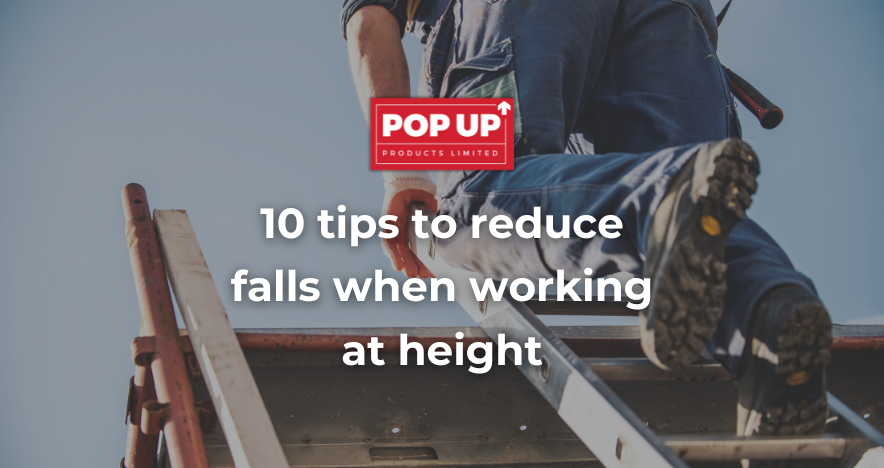- News & Articles
-
Products
Product Ranges
Product Categories
- Hire
- Buy
- About
- Resources
- After Sales Service
- Make an Enquiry

No Falls Week is taking place between 13th and 17th May. Falls from height are the single biggest cause of workplace deaths and one of the main causes of major injuries. It is therefore essential that any work at height is properly planned, supervised and carried out by competent people to make sure it is undertaken safely as required by the Work at Height Regulations 2005 (WAHR).
Unfortunately, falls from height, both in the workplace and at home, do happen but the majority of these could have been avoided completely with some care and attention.
Here are 10 tips to help reduce the chance of you having a fall when working at height.
Before carrying out any work at height, conduct a thorough risk assessment. Identify hazards, plan how to eliminate them, and choose the safest way to complete the task.
If there’s ever a safer alternative to carry out a task that doesn’t involve height, choose that. You should always prioritise eliminating the need to work at height altogether where possible.
You should always use the most appropriate protection equipment for the job, ensuring it’s properly inspected, maintained, and meets safety standards. Make sure you are familiar with the correct way to use the equipment.
When working on elevated surfaces, prioritise guardrails to protect you from a slip or fall. If a fall is ever possible, ensure a properly fitted PFAS is in use at all times. All of our access towers have a guardrail fitted so make sure you use it!
Only fully trained and authorised workers should be working at height. Proper training ensures workers understand the risks, work out a plan to eliminate any potential safety issues and can then carry out the work with that in mind.
Clear communication is vital on any job site. If you are working with other people, everyone involved should fully know the plan, any potential hazards and safety protocols.
Adverse weather conditions can make working at height extremely unsafe to do. Always avoid working at height during high winds, rain, or snow, as these can increase slip and fall hazards.
Try to keep the work area clean, clear and organised. Clutter, debris and spillages can all create slipping or tripping hazards which can lead to you falling.
Don’t attempt work at height if you’re feeling tired or unwell. When you are working while under the weather, you will not be carefully considering your safety and making sure you aren’t taking unnecessary risks.
You should inspect ladders, scaffolding, access towers and PPE regularly to ensure they are in good working order and haven’t sustained any damage. When equipment gets damaged or worn, it can effect its integrity.
By considering all of these 10 tips, you will be drastically reducing your chances of having a fall.
Find out more about No Falls Week here.
Pop Up Products Limited are an independent British company based in the North West of the UK, specialising in access products and solutions. We work tirelessly with our manufacturing partners to develop and deliver world class products and are active members of the important industry leading associations of PASMA and IPAF.